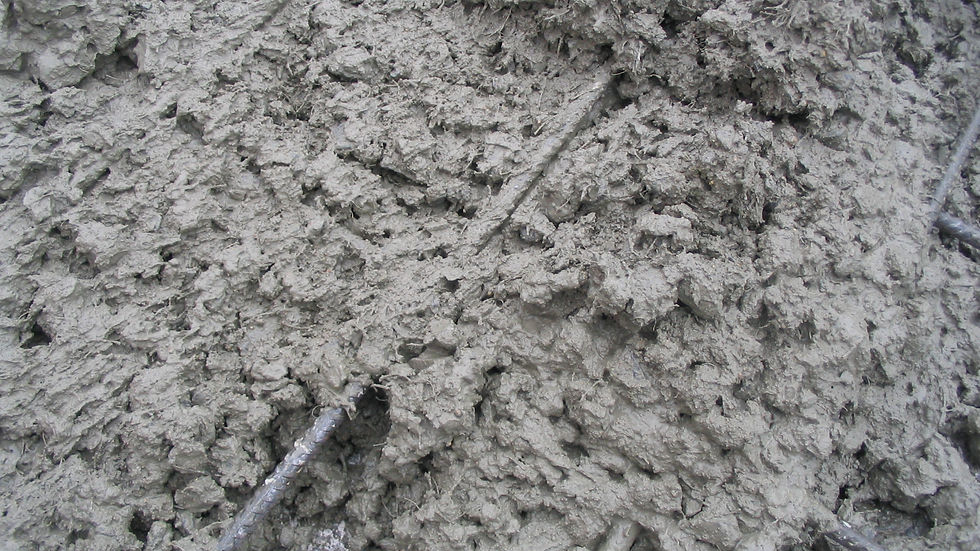Polypropylene Synthetic fibers for use in concrete for industrial and commercial buildings
- Jason
- Jan 11
- 4 min read
The Evolution of Polypropylene Fibers in Concrete Reinforcement
The use of fibers in concrete dates back several decades, with early forms of reinforcement originating from natural materials such as steel and glass fibers. However, the introduction of synthetic fibers, including polypropylene, revolutionized the industry.
In the 1980s, polypropylene fibers were first used to mitigate cracking issues caused by plastic shrinkage and to reinforce concrete, offering an affordable and effective alternative to traditional steel reinforcement. Today the main material for concrete reinforcement has been replaced by synthetic fibers. The price and high-tech characteristics of this fiber for concrete allow it to successfully compete with metal fibers and meshes.
PIONEER Scientific Industry (NanJing) Co., Ltd, a leading manufacturer in the field of concrete reinforcement, has significantly contributed to the growth of polypropylene fibers for concrete.We are one of the first major companies to promote the large-scale application of synthetic fibers in concrete and asphalt reinforcement in China.

Features and Benefits of fiber to concrete
Improves concrete’s resistance to plastic shrinkage cracking.
Inhibits formation of micro-cracks due to dimensional change.
Reduces sedimentation.
Increased cohesion of the mix.Increased cohesion of the mix.
No requirement for crack control steel mesh.
Concrete placement and crack control in ONE operation.
Less expensive (per m²) than conventional steel mesh reinforcement.
Additionally, the fibers help control cracking during the curing process by distributing stresses uniformly throughout the concrete mix. This is especially important in large-scale projects like pavements, bridges, and industrial flooring, where long-term durability is paramount.
NOTES:
1. Effective protection and curing is essential for all concrete slabs - including polypropylene fibre concrete.
2. Polypropylene fibre concrete CANNOT be used as a substitute for structural steel reinforcement.

PIONEER: Innovating Polypropylene Fiber Solutions for Concrete
PIONEER has been at the forefront of developing innovative polypropylene fibers for concrete reinforcement.As one of the earliest manufacturers to promote the application of concrete reinforced fibers in China, PIONEER has accumulated rich practical engineering experience in thousands of engineering applications over the past 22 years.
By leveraging advanced technology and extensive research and development, PIONEER has become a trusted supplier of concrete fibers. Our product offering also includes other fiber types such as micro fibers and macro fibers, allowing for tailor-made solutions for specific concrete reinforcement needs.
Contractors and engineers from all over the world recommend the use of different types of concrete filled with synthetic fibres and other materials that can enhance different aspects of the construction where it’s being used.The products and solutions offered by PIONEER are many. They are tailored for the needs and applications of each customer.

What fibers can be added to concrete?
There are many types of fibers used to reinforce concrete, including steel fibers, micro fibers, and macro fibers. These fibers offer advantages such as reduced shrinkage cracking, high tensile strength, and excellent chemical resistance.
Polypropylene fibers, in particular, stand out for their ability to isolate both organic and inorganic pollutants. Additionally, they enhance concrete's impermeability, preventing water penetration in areas where they are applied.
HPM® Micro Fiber:This is PIONEER's micro synthetic fiber series, which includes polyacrylonitrile fiber, polyvinyl alcohol fiber, alkali-resistant glass fiber and other products in addition to polypropylene fiber.
HTM® Micro Fiber:This is PIONEER's macro synthetic fiber series, which includes PP-PE composite macro fibers, mixed fibers of microfibers and macrofibers, etc., in addition to polypropylene macro fibers.
Cost benefit analysis
• Cost savings in secondary reinforcement steel mesh for ground supported slabs
• Faster construction (removes the need to lay mesh and spacers etc.)

Polypropylene fibers can be applied in several key areas to enhance the strength, durability, and performance of concrete.
These include:
Roads and Pavements
Industrial Flooring
Precast Concrete
Shotcrete
Sewer and Wastewater Infrastructure
Marine Structures
Bridge Decks and Overpasses
Residential and Commercial Construction
Applicable Standards
ASTM C1116/C1116M – Standard for Fiber-Reinforced Concrete.
EN 14889-2:2006 – Synthetic Fibers for Concrete.
FAQ’s
Q.Can fibre be used in structural concrete?
A. Yes, but it cannot be used to replace or supplement structural reinforcement. However, it can be used in conjunction with the steel to help reduce settlement cracking over structural reinforcement, particularly in deep sections such as walls and columns.
Q.Is it more cost-effective to use fibre instead of crack control steel mesh?
A. Yes, polypropylene fibre is about half the cost of A142 steel mesh per square metre of slab. There is also a saving in handling and an increase in site productivity, as the mixer can reverse right up to the point of placing.
Q.Are any special finishing techniques required?
A. No, the concrete can be compacted and finished normally. Trowelling totally embeds the fibres in the concrete surface. Some fibres may be exposed where a textured finish is applied, but these quickly disappear.
Q.Can concrete with fibre be pumped?
A. Yes, fibre actually improves the pumping characteristics.
Q.Are movement joints necessary?
A. Yes, contraction joints are necessary and should be spaced at the normal intervals prescribed for an ‘unreinforced slab design’.
Q.What is the dosage rate for polypropylene fibres?
A. Normally 0.9kg/m3 for most applications.




댓글